The Whimsical Garden Trend Takes Maximalism Outdoors, with Gorgeous Results
Get creative in your landscape with bright colors, unexpected plants, and quirky decorations.
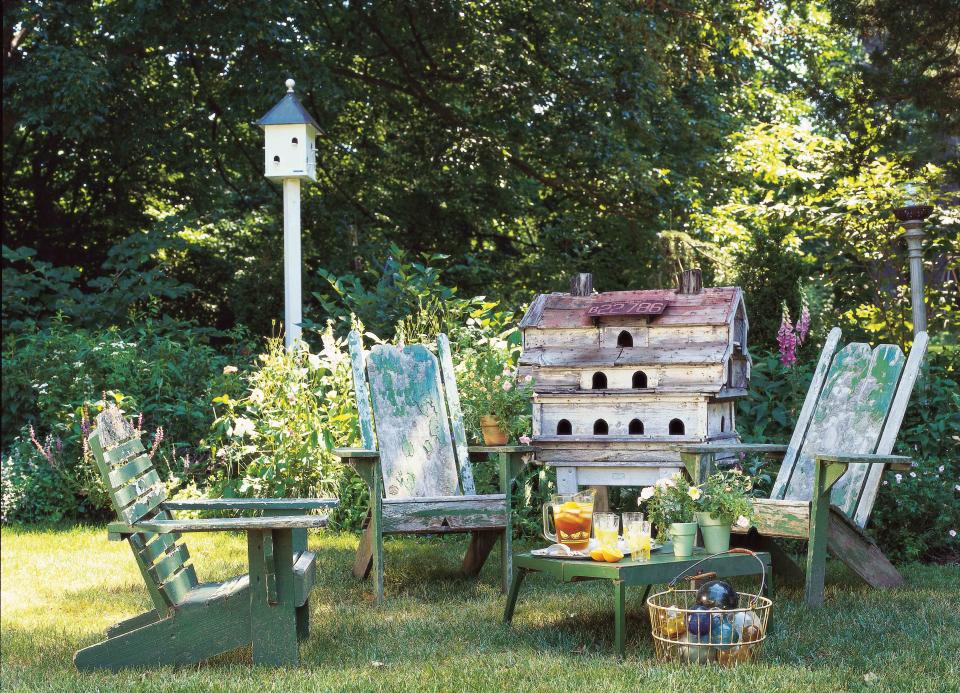
Better Homes & Gardens
Gone are the days when formal, highly cultivated gardens are in demand. Now, homeowners are flocking to more informal and organic-looking gardens like cottage gardens, prairie gardens, and rustic gardens—and the whimsical garden is the newest garden aesthetic to be added to that list. Think of it as the English cottage garden’s edgier, more eclectic cousin. Characterized by unique shapes, pops of color, unexpected features, and plenty of creativity, this up-and-coming style is set to be huge in 2023. Here’s what you need to know about creating a whimsical garden in your home.
Related: Meadowscaping Is a Trendy Lawn Alternative—Here's How to Try It in Your Yard
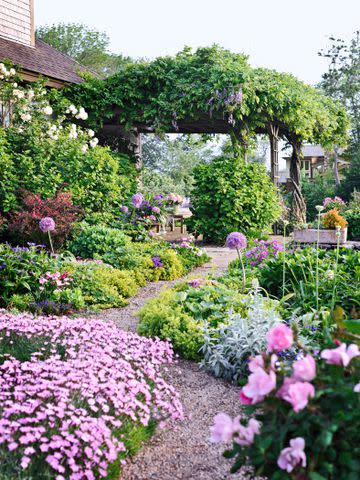
Better Homes & Gardens
What Is a Whimsical Garden?
The whimsical garden style is all about bringing a sense of awe and wonder to your landscape.
“It aims to be more maximalist rather than minimalist in design,” says Steve Eakin, founder of Love My Bonsai. Think Alice in Wonderland meets the whimsigoth aesthetic and you’ve basically got it.
These gardens include lots of texture, color, and quirky features and shapes to establish a sense of fairytale-like whimsy. You’ll likely find things like meandering cobblestone pathways, unique water features, garden benches, fairy houses, unexpected planters, mushroom and gnome statues, windchimes, and lots of string lights.
“A whimsical garden is imaginative, creative, and maybe even a little chaotic at first glance,” says Aaron Green of Essential Home and Garden. “There’s no one way or set blueprint for a whimsical garden, and that’s what’s great about it.”
Related: The 10 Best Outdoor String Lights of 2023 to Illuminate Your Backyard
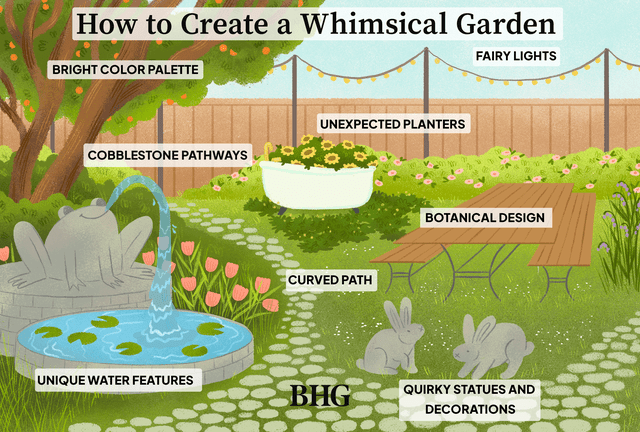
BHG / Madelyn Goodnight
How to Achieve a Whimsical Garden Aesthetic
Whimsical gardens can be thought of as the antithesis of the formal garden style. Where formal gardens call for straight lines, cohesion, classic accents, and simplicity, whimsical gardens throw those strict guidelines out the window. Instead, organic shapes, quirky and unique decorations, bright colors, and non-traditional accents make the whimsical aesthetic what it is. Focus on creating a space that evokes feelings of wonder and excitement, whatever that means to you.
“A whimsical garden is about bringing the unexpected to an outdoor space,” says Amy Hovis, Principal designer at award-winning landscape design and build studio Eden Garden Design. “It’s fun to use objects, items, or design criteria that you’d normally expect to see inside a home. For example, select textiles, a lamp, a chandelier, a table, or add custom niches, or even a fireplace.”
Also don’t be afraid to create a fun focal point: Hovis recommends a labyrinth made of rows of plantings (like boxwood, for example) installed as a maze or a giant outdoor chess set. Have fun with it and let your imagination go wild, with these tips to guide you.
Related: Whimsical Landscaping Design Ideas
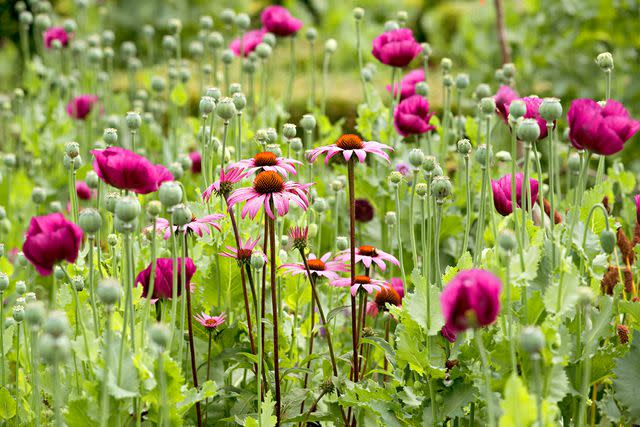
Create Visual Interest With Plants
Whimsical gardens aren’t just about cute and quirky statues and decorations; the plants that you choose play a big role in the overall design as well. Choose plants, shrubs, and trees with unique and unexpected shapes to add some visual interest to your landscape along with lots of bright, bold colors.
“For example, dwarf plants, overly large-leaved plants, vines, succulents, and brightly colored flowers,” recommends Green. When choosing the plants for your garden, also make sure that you keep your region’s climate in mind, along with the type of work and upkeep you are willing to put into your garden.
Related: 11 Blooming Plants with Breathtakingly Big Flowers
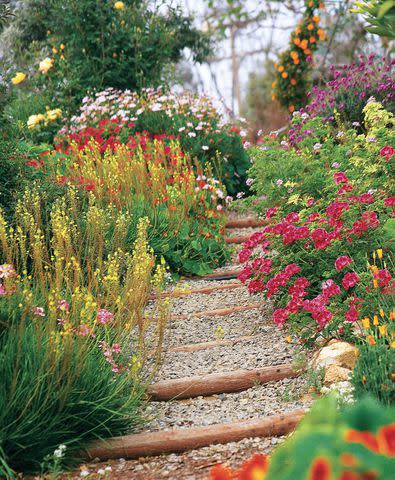
Practice Restraint
The key to creating a whimsical garden that looks curated and modern rather than kitschy and overdone is to practice restraint and know where to draw the line, Hovis says. Stick to a few whimsical elements per garden so as to not overwhelm the eye.
Also keep basic design principals like scale, balance, and unity in mind while you are planning your landscape to ensure the finished product looks intentional and well put together.
“Things like too many different colors, or too many things in a small space, can make it feel overwhelming … if you want a more cohesive look, stick to a limited color palette, create a sense of flow with curved paths, add some hidden surprise elements, and remember that less is more,” Green says.
For more Better Homes & Gardens news, make sure to sign up for our newsletter!
Read the original article on Better Homes & Gardens.

